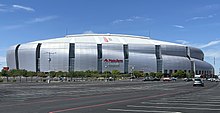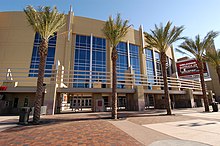

Physician errors are unfortunately all too common in the medical field, and can have serious consequences for patients. Some of the most common types of physician errors include misdiagnosis, medication errors, surgical mistakes, and communication breakdowns.
Misdiagnosis occurs when a doctor fails to correctly identify a patient's condition, leading to delayed or incorrect treatment. This can result in unnecessary suffering for the patient, as well as potentially life-threatening complications if the true underlying issue is not addressed.
Medication errors are another frequent type of physician error, often due to factors such as illegible handwriting on prescriptions, incorrect dosages being administered, or drug interactions not being properly considered. These mistakes can lead to serious side effects or even death in some cases.
Surgical mistakes occur when an operation is performed incorrectly or on the wrong body part. These errors can have devastating consequences for patients, resulting in permanent disability or even death in extreme cases.
Communication breakdowns between healthcare providers can also contribute to physician errors. When crucial information is not shared or understood correctly among members of a patient's care team, it can lead to misunderstandings that impact the quality of care provided.
Overall, physician errors are a serious issue that must be addressed through improved training, communication protocols, and systems for preventing and reporting mistakes. By working together to identify and rectify these common types of errors, healthcare professionals can help ensure better outcomes for their patients and reduce the risk of harm caused by preventable mistakes.
Physician errors can have a significant impact on patient outcomes. When doctors make mistakes in diagnosis, treatment, or medication management, it can lead to serious consequences for patients. Misdiagnosis can result in delayed or incorrect treatment, potentially allowing a condition to worsen. Errors in prescribing medication can lead to adverse drug reactions or ineffective treatment.
In addition to the physical harm that can arise from physician errors, there is also an emotional toll on patients and their families. Trust in the healthcare system may be compromised, leading to feelings of anxiety and uncertainty about future medical care. Patients may also experience financial burdens from additional medical expenses needed to correct errors or manage complications.
Physician errors not only affect individual patients but also have broader implications for healthcare systems as a whole. Medical malpractice claims resulting from physician mistakes can drive up costs for providers and insurers, leading to higher healthcare expenses for everyone. Quality of care may be called into question, eroding confidence in the medical profession.
To mitigate the impact of physician errors on patient outcomes, it is crucial for healthcare institutions to prioritize patient safety through robust systems and protocols for error prevention and reporting. Continuous education and training for healthcare professionals on best practices and emerging technologies are essential to reducing the likelihood of mistakes. Open communication between providers and patients is also key to ensuring transparency and accountability when errors occur.
Ultimately, by addressing the root causes of physician errors and implementing strategies to prevent them, we can improve patient outcomes and promote a culture of safety in healthcare settings.

A Glendale medical malpractice lawyer is a legal professional who specializes in handling cases where patients have suffered harm due to the negligence of healthcare providers.. These lawyers are experienced in navigating the complex world of medical malpractice law and are dedicated to helping their clients seek justice and compensation for the injuries they have sustained. Medical malpractice occurs when a healthcare provider fails to provide a standard level of care, resulting in harm to the patient.
Posted by on 2024-11-21

A medical malpractice attorney in Glendale plays a crucial role in helping patients who have suffered harm due to the negligence of a healthcare provider.. These attorneys specialize in handling cases where a patient has been injured or harmed as a result of medical treatment that did not meet the accepted standard of care. One of the main responsibilities of a medical malpractice attorney is to investigate and gather evidence to support their client's case.
Posted by on 2024-11-21

A Glendale medical malpractice lawyer can provide a range of services to individuals who have been victims of medical negligence.. These legal professionals are well-versed in the complex laws and regulations surrounding medical malpractice cases, and they can offer invaluable guidance and support throughout the entire legal process. One of the primary services that a Glendale medical malpractice lawyer can provide is conducting a thorough investigation into the circumstances surrounding the alleged malpractice.
Posted by on 2024-11-21

When searching for a Glendale medical malpractice attorney, it's important to consider certain qualifications to ensure that you find the best legal representation for your case.. Medical malpractice cases can be complex and challenging, so having an experienced and knowledgeable attorney by your side is crucial. One of the first things to look for in a medical malpractice attorney is their experience in handling similar cases.
Posted by on 2024-11-21
Physician errors can have serious consequences for patients, leading to misdiagnosis, medication errors, or other harmful outcomes. There are several factors that contribute to these errors, many of which are inherent in the complex nature of medical practice.
One major factor is the high workload and time pressure that physicians face on a daily basis. With limited time to see each patient and a heavy caseload to manage, it can be easy for doctors to make mistakes in diagnosis or treatment. This pressure can also lead to fatigue and burnout, further increasing the risk of errors.
Another contributing factor is the complexity of modern healthcare systems. With electronic health records, multiple specialists involved in patient care, and a plethora of medications to choose from, there are numerous opportunities for miscommunication or misunderstandings that can result in errors.
Additionally, human factors such as cognitive biases or overconfidence can play a role in physician errors. Doctors may rely too heavily on previous experiences or assumptions, leading them to overlook crucial information or make incorrect decisions.
Finally, lack of proper training or support systems can also contribute to physician errors. Without adequate resources or supervision, doctors may not have the tools they need to make informed decisions or catch their mistakes before they harm patients.
Overall, addressing these factors requires a multi-faceted approach that includes improving work conditions for physicians, streamlining healthcare systems to reduce complexity, providing ongoing education and training opportunities, and implementing quality control measures to catch errors before they reach patients. By recognizing and addressing these contributing factors, we can work towards reducing physician errors and improving patient safety in healthcare settings.

Physician errors can have serious consequences for patients, leading to harm or even death in some cases. It is crucial that healthcare providers take steps to prevent these errors from occurring in the first place. One important strategy for preventing physician errors is to ensure clear communication among healthcare team members. This includes effective handoffs between shifts, accurate and thorough documentation of patient information, and open dialogue between colleagues about any concerns or questions.
Another key strategy is to implement technology solutions that can help identify and prevent errors before they happen. Electronic health records, decision support systems, and medication management tools can all play a role in reducing the likelihood of mistakes being made. By leveraging these technologies, physicians can access real-time information about their patients and receive alerts about potential issues that may need attention.
Furthermore, ongoing education and training for healthcare providers are essential for staying up-to-date on best practices and new developments in medicine. By continuously learning and improving their skills, physicians can better identify potential errors and take steps to prevent them from occurring.
Overall, preventing physician errors requires a multi-faceted approach that involves clear communication, technology solutions, and ongoing education. By incorporating these strategies into their practice, healthcare providers can help ensure the safety and well-being of their patients while minimizing the risk of errors occurring.
Physician errors can have significant legal implications that affect both the healthcare provider and the patient. When a physician makes a mistake in diagnosis, treatment, or surgery, it can lead to serious consequences such as injury or even death for the patient. In these cases, patients may choose to take legal action against the physician for medical malpractice.
Medical malpractice occurs when a healthcare provider fails to meet the standard of care expected in their field, resulting in harm to the patient. Patients who have suffered due to physician errors may seek compensation for medical expenses, lost wages, pain and suffering, and other damages through a lawsuit.
The legal process for medical malpractice cases can be complex and time-consuming. Patients must prove that the physician's error directly caused their injury or harm, often requiring expert testimony and medical records. Physicians may also face disciplinary action from regulatory bodies or professional organizations if found guilty of malpractice.
To mitigate the risk of legal implications from physician errors, healthcare providers must prioritize patient safety and quality care. This includes thorough documentation of patient interactions, clear communication with patients about their treatment options, and ongoing education and training to stay current on best practices.
In conclusion, physician errors can have serious legal repercussions for both patients and healthcare providers. It is crucial for physicians to uphold high standards of care to prevent errors that could lead to medical malpractice claims. By prioritizing patient safety and quality care, physicians can reduce the risk of legal implications while providing optimal treatment for their patients.
Physician errors can have serious consequences for patients, which is why it is crucial to report and address them promptly. By doing so, healthcare providers can identify the root causes of these mistakes and implement measures to prevent them from happening again in the future.
Reporting physician errors also helps to improve patient safety and quality of care. When errors are brought to light, hospitals and clinics can review their protocols and procedures to ensure that they are up-to-date and effective. This not only benefits current patients but also future patients who may receive treatment at the facility.
Furthermore, addressing physician errors openly and transparently can help build trust between patients and healthcare providers. Patients are more likely to feel confident in their doctors if they know that mistakes are acknowledged and rectified promptly. This open communication can also lead to improved patient outcomes as issues are identified and resolved quickly.
Overall, reporting and addressing physician errors is essential for maintaining a high standard of care in the medical field. By taking a proactive approach to identifying and correcting mistakes, healthcare providers can ensure that patients receive safe and effective treatment. It is important for all members of the healthcare team to be vigilant in reporting errors so that improvements can be made for the benefit of everyone involved.
Glendale | |
|---|---|
 Downtown
Glendale | |
 Location in Maricopa County, Arizona | |
| Coordinates: 33°32′19″N 112°11′11″W / 33.53861°N 112.18639°W | |
| Country | United States |
| State | Arizona |
| County | Maricopa |
| Founded by | William John Murphy |
| Government | |
| • Mayor | Jerry Weiers (Non-Partisan) |
| • Vice mayor | Jamie Aldama |
| Area | |
• Total | 65.09 sq mi (168.59 km2) |
| • Land | 64.68 sq mi (167.53 km2) |
| • Water | 0.41 sq mi (1.06 km2) |
| Elevation | 1,152 ft (351 m) |
| Population | |
• Total | 248,325 |
| • Rank | US: 89th |
| • Density | 3,839.17/sq mi (1,482.30/km2) |
| Demonym | Glendalian |
| Time zone | UTC−7 (MST (no DST)) |
| ZIP code | 85301-85318 |
| Area codes | 602, 480, 623 |
| FIPS code | 04-27820 |
| GNIS feature ID | 5060[2] |
| Website | www |
Glendale (/ˈɡlɛndeɪl/) is a city in Maricopa County, Arizona, United States. Located about nine miles northwest of the state capital Phoenix, Glendale is known for State Farm Stadium, which is the home of the Arizona Cardinals football team. The city also contains the Arrowhead Towne Center shopping mall. As of the 2020 census, Glendale had a population of 248,325.[3]
In the late 1800s the area that is now Glendale was all desert. William John Murphy, a native of New Hartford, New York, who resided in the town of Flagstaff in what was then the territory of Arizona, was in charge of building the 40-mile-long (64 km) Arizona Canal from Granite Reef to New River for the Arizona Canal Company. In 1885, he completed the canal, which would bring water to the desert land.[4] Murphy was deep in debt, since he had agreed to be paid in Arizona Canal Company stock and bonds and land instead of cash.[5]

In 1887, Murphy formed the Arizona Improvement Company. His objective was to sell the land and water rights south of the canal. Murphy raised capital from out of state sources in order to meet payroll and construction expenses.[5] Murphy decided to refer to this land as "Glendale". In order to develop and interest potential investors and settlers in this new town, Murphy decided to provide a better way of access from Phoenix to Glendale and ending in the town of Peoria by building an 18-mile-long (29 km) diagonal road which he named Grand Avenue.
In 1891, Burgess Hadsell worked with Murphy to bring 70 Brethren and River Brethren families to Glendale to form a temperance colony. Soon settlers, attracted by the town's ban on alcoholic beverages, continued to arrive. In 1895, Murphy platted the original town site and amended the plat to include a town park and some business lots. It was bounded by Lamar Road on the south, 55th Avenue on the east, Myrtle Avenue on the north, and 59th Avenue on the west.[6] The construction of a railroad from Prescott to Phoenix was made possible with an exchange of the right-of-way made by Murphy along Grand Avenue.[4] The railroad allowed Glendale settlers to transport goods to the north and easily receive building materials.
The construction and commercial applications of the Beet Sugar Factory in 1906 also contributed to the growth of Glendale. Though the operations of the factory only lasted until 1913, it played an important role in the increase of immigrant and migrant settlers in the city.[7] Several other businesses were founded around this time such as Glendale Ice Company, Pacific Creamery Company, Glendale Milling Company, and Southwest Flour and Feed.[8]
World War I ushered in a renewal for Glendale, with cotton prices rising throughout the period. Cotton continues to be a source of economic prosperity in Glendale with many farms still along the Loop 101, despite many farmers switching to more profitable crops.[9] A high demand for food, also kept farmers busy. Numerous farms and orchards were established and thrived through the early 1900s.[10]
World War II brought the birth of Thunderbird Field to train civilian pilots for the Army. In late 1940, a few Hollywood actors and businessmen, headed by Leland Hayward, approached the Army to establish a primary flight training school. This group chose the site of Thunderbird Field primarily because of its abundance of space, excellent weather, and good visibility.[11] While this field was being built in 1941, the Army was busy working on a larger base for $4.5 million, Luke Field (now Luke Air Force Base). This base was named for the first pilot to receive a Medal of Honor, Lt. Frank Luke Jr. Thunderbird Field would later become the Thunderbird American Graduate School for International Management.
The military and college presence, as well as the increase in population (nearly doubling between 1950 and 1960),[12] sparked a need for utilities, parks, schools and streets. Over the next 40 years, the city added a landfill, water treatment plant, sewage plants, libraries, parks, public safety facilities, an airport, a city hall and a civic center.
Arrowhead Towne Center opened in 1993, and the surrounding neighborhood, Arrowhead Ranch, made the area a hotspot for housing and shopping. The completion of Loop 101 throughout Glendale opened the city to the rest of the Valley.[8]
In recent decades, the city has begun major investment into tourism. The establishment of the Westgate Entertainment District, housing Desert Diamond Arena, and State Farm Stadium in the early 2000s made Glendale a destination for locals and visitors. Construction of the VAI Resort and Mattel Adventure Park, scheduled to open in 2025, will continue to grow Glendale’s tourism economy creating hundreds of new jobs and proving more than a thousand new hotel rooms for the city.[13][14]
In 2024, the city called on the Department of Defense to lobby for Arizona Governor Katie Hobbs to veto bipartisan legislation to increase housing supply in Arizona. Ryan Lee, the city’s intergovernmental-programs director, confirmed to The Atlantic that he was behind the move. State Representative Analise Ortiz, whose district includes parts of Glendale, criticized the city for going behind legislators' back to lobby against the legislation, "This is not the way we typically go about creating policy."[15]
According to the United States Census Bureau, the city has a total area of 65.1 square miles (169 km2), of which 0.4 square miles (1.0 km2), or 0.63%, is water.[1] The New River and Agua Fria River flow southward through the western extremities of the city.
Glendale has a hot desert climate (Köppen: BWh) typical of Southern Arizona, with very hot and dry summers and mild winters.[16]
| Climate data for Phoenix Int'l, Arizona (1991–2020 normals,[a] extremes 1895–present)[b] | |||||||||||||
|---|---|---|---|---|---|---|---|---|---|---|---|---|---|
| Month | Jan | Feb | Mar | Apr | May | Jun | Jul | Aug | Sep | Oct | Nov | Dec | Year |
| Record high °F (°C) | 88 (31) |
92 (33) |
100 (38) |
105 (41) |
114 (46) |
122 (50) |
121 (49) |
118 (48) |
118 (48) |
113 (45) |
99 (37) |
87 (31) |
122 (50) |
| Mean maximum °F (°C) | 78.2 (25.7) |
82.1 (27.8) |
90.4 (32.4) |
99.0 (37.2) |
105.7 (40.9) |
112.7 (44.8) |
114.6 (45.9) |
113.2 (45.1) |
108.9 (42.7) |
100.7 (38.2) |
88.9 (31.6) |
77.7 (25.4) |
115.7 (46.5) |
| Mean daily maximum °F (°C) | 67.6 (19.8) |
70.8 (21.6) |
78.1 (25.6) |
85.5 (29.7) |
94.5 (34.7) |
104.2 (40.1) |
106.5 (41.4) |
105.1 (40.6) |
100.4 (38.0) |
89.2 (31.8) |
76.5 (24.7) |
66.2 (19.0) |
87.1 (30.6) |
| Daily mean °F (°C) | 56.8 (13.8) |
59.9 (15.5) |
66.3 (19.1) |
73.2 (22.9) |
82.0 (27.8) |
91.4 (33.0) |
95.5 (35.3) |
94.4 (34.7) |
89.2 (31.8) |
77.4 (25.2) |
65.1 (18.4) |
55.8 (13.2) |
75.6 (24.2) |
| Mean daily minimum °F (°C) | 46.0 (7.8) |
49.0 (9.4) |
54.5 (12.5) |
60.8 (16.0) |
69.5 (20.8) |
78.6 (25.9) |
84.5 (29.2) |
83.6 (28.7) |
78.1 (25.6) |
65.6 (18.7) |
53.7 (12.1) |
45.3 (7.4) |
64.1 (17.8) |
| Mean minimum °F (°C) | 36.0 (2.2) |
40.0 (4.4) |
44.4 (6.9) |
50.1 (10.1) |
58.4 (14.7) |
69.4 (20.8) |
74.4 (23.6) |
74.2 (23.4) |
68.3 (20.2) |
53.8 (12.1) |
42.0 (5.6) |
35.4 (1.9) |
33.8 (1.0) |
| Record low °F (°C) | 16 (−9) |
24 (−4) |
25 (−4) |
35 (2) |
39 (4) |
49 (9) |
63 (17) |
58 (14) |
47 (8) |
34 (1) |
27 (−3) |
22 (−6) |
16 (−9) |
| Average precipitation inches (mm) | 0.87 (22) |
0.87 (22) |
0.83 (21) |
0.22 (5.6) |
0.13 (3.3) |
0.02 (0.51) |
0.91 (23) |
0.93 (24) |
0.57 (14) |
0.56 (14) |
0.57 (14) |
0.74 (19) |
7.22 (183) |
| Average precipitation days (≥ 0.01 in) | 3.8 | 4.1 | 3.1 | 1.5 | 1.0 | 0.5 | 3.9 | 4.6 | 2.5 | 2.2 | 2.2 | 4.0 | 33.4 |
| Average relative humidity (%) | 50.9 | 44.4 | 39.3 | 27.8 | 21.9 | 19.4 | 31.6 | 36.2 | 35.6 | 36.9 | 43.8 | 51.8 | 36.6 |
| Average dew point °F (°C) | 32.4 (0.2) |
32.2 (0.1) |
32.9 (0.5) |
31.6 (−0.2) |
34.3 (1.3) |
39.0 (3.9) |
56.1 (13.4) |
58.3 (14.6) |
52.3 (11.3) |
43.0 (6.1) |
35.8 (2.1) |
33.1 (0.6) |
40.1 (4.5) |
| Mean monthly sunshine hours | 256.0 | 257.2 | 318.4 | 353.6 | 401.0 | 407.8 | 378.5 | 360.8 | 328.6 | 308.9 | 256.0 | 244.8 | 3,871.6 |
| Percent possible sunshine | 81 | 84 | 86 | 90 | 93 | 95 | 86 | 87 | 89 | 88 | 82 | 79 | 87 |
| Average ultraviolet index | 3.1 | 4.4 | 6.6 | 8.5 | 9.7 | 10.9 | 11.0 | 10.1 | 8.3 | 5.6 | 3.7 | 2.7 | 7.0 |
| Source 1: NOAA (dew points, relative humidity, and sun 1961–1990)[17][18][19], Weather.com[20] | |||||||||||||
| Source 2: UV Index Today (1995 to 2022)[21] | |||||||||||||
| Census | Pop. | Note | %± |
|---|---|---|---|
| 1910 | 1,000 | — | |
| 1920 | 2,737 | 173.7% | |
| 1930 | 3,665 | 33.9% | |
| 1940 | 4,855 | 32.5% | |
| 1950 | 8,179 | 68.5% | |
| 1960 | 15,893 | 94.3% | |
| 1970 | 36,228 | 127.9% | |
| 1980 | 97,172 | 168.2% | |
| 1990 | 147,864 | 52.2% | |
| 2000 | 218,812 | 48.0% | |
| 2010 | 226,721 | 3.6% | |
| 2020 | 248,325 | 9.5% | |
| U.S. Decennial Census[22] | |||
| Race / Ethnicity (NH = Non-Hispanic) | Pop 2000[23] | Pop 2010[24] | Pop 2020[25] | % 2000 | % 2010 | % 2020 |
|---|---|---|---|---|---|---|
| White alone (NH) | 141,462 | 116,866 | 107,695 | 64.65% | 51.55% | 43.37% |
| Black or African American alone (NH) | 9,818 | 12,766 | 17,872 | 4.49% | 5.63% | 7.20% |
| Native American or Alaska Native alone (NH) | 2,460 | 2,707 | 3,030 | 1.12% | 1.19% | 1.22% |
| Asian alone (NH) | 5,860 | 8,618 | 11,272 | 2.68% | 3.80% | 4.54% |
| Pacific Islander alone (NH) | 230 | 355 | 492 | 0.11% | 0.16% | 0.20% |
| Other race alone (NH) | 289 | 329 | 1,171 | 0.13% | 0.15% | 0.47% |
| Mixed race or Multiracial (NH) | 4,350 | 4,579 | 9,176 | 1.99% | 2.02% | 3.70% |
| Hispanic or Latino (any race) | 54,343 | 80,501 | 97,617 | 24.84% | 35.51% | 39.31% |
| Total | 218,812 | 226,721 | 248,325 | 100.00% | 100.00% | 100.00% |
As of the census of 2010, there were 226,710 people, 79,114 households, and 54,721 families residing in the city. The population density was 3,929.5 inhabitants per square mile (1,517.2/km2). There were 79,667 housing units at an average density of 1,430.7 per square mile (552.4/km2). The racial makeup of the city was 75.54% White, 6% Black or African American, 1.7% Native American, 3.9% Asian, 0.2% Pacific Islander, 16.95% from other races, and 4.0% from two or more races. 35.5% of the population was Hispanic or Latino of any race.
There were 79,114 households, out of which 39.9% had children under the age of 18 living with them, 53.5% were married couples living together, 12.8% had a female householder with no husband present, and 28.2% were non-families. 21.3% of all households were made up of individuals, and 5.8% had someone living alone who was 65 years of age or older. The average household size was 2.85 and the average family size was 3.33.
In the city, 30.1% of the population was under the age of 18, 10.8% was from 18 to 24, 31.9% from 25 to 44, 19.9% from 45 to 64, and 7.4% was 65 years of age or older. The median age was 31 years. For every 100 females, there were 99.6 males. For every 100 females age 18 and over, there were 97.1 males.
The median income for a household in the city was $45,015, and the median income for a family was $51,162. Males had a median income of $35,901 versus $27,736 for females. The per capita income for the city was $19,124. About 8.8% of families and 11.9% of the population were below the poverty line, including 15.3% of those under age 18 and 9.5% of those age 65 or over.
| # | Employer | # of Employees |
|---|---|---|
| 1 | Luke Air Force Base | 5,100 |
| 2 | Banner Health | 3,000 |
| 3 | Arrowhead Towne Center | 2,650 |
| 4 | Walmart | 2,175 |
| 5 | Glendale Union High School District | 1,974 |
| 6 | Glendale Community College | 1,948 |
| 7 | The City of Glendale | 1,693 |
| 8 | Deer Valley Unified School District | 1,594 |
| 9 | Glendale Elementary School District | 1,400 |
| 10 | Tanger Outlets | 1,200 |
Source: AZCentral.com[26]


Glendale is noted for its retail sales of antiques.[30]
The Arrowhead Towne Center mall is located here.
Glendale was temporarily renamed as Swift City on March 17 and 18, 2023,[31] as per the mayor and the city council's proclamation,[32] to celebrate the opening concerts of the Eras Tour, the sixth concert tour by American singer-songwriter Taylor Swift, at State Farm Stadium.[33] The Westgate Entertainment District, a mixed-use complex in the city, additionally put up welcoming messages, with the local restaurants offering Swift-themed menu items.[34][35] State Farm also hosted the Super Bowl LVII halftime show, headlined by Barbadian singer Rihanna, shortly before the tour.[36]


Glendale is the site of two major sports venues: State Farm Stadium and Desert Diamond Arena. Both venues are part of the Glendale Sports and Entertainment District development plan, meant to spur growth in the sparsely inhabited Yucca district. Both venues are owned by the City of Glendale.
State Farm Stadium has been the home field of the Arizona Cardinals in the National Football League since 2006, and the annual Fiesta Bowl college football game since 2007. Both the Cardinals and bowl game moved from Sun Devil Stadium on the Arizona State University campus in Tempe. Since opening, the facility has hosted three Super Bowls, three college football national championship games, the NCAA Men's Basketball Final Four, WrestleMania XXVI and International Champions Cup soccer to Glendale. Designed by architect Peter Eisenman, the stadium was featured on The History Channel TV series, Modern Marvels because of its roll-out natural grass field.
Desert Diamond Arena (formerly Glendale Arena, then Jobing.com Arena and Gila River Arena) and Westgate City Center is adjacent to State Farm Stadium, and was the home of the Arizona Coyotes of the National Hockey League (NHL). It was also the home of the now defunct Arizona Sting of the National Lacrosse League (NLL). The inaugural Street League Skateboarding event was held in the summer of 2010 in Glendale at the Gila River Arena. This street skateboarding competition returns to Glendale annually. Currently, the arena hosts the Arizona Rattlers of the Indoor Football League.
In 2009, the Los Angeles Dodgers and the Chicago White Sox of Major League Baseball began to share the new Camelback Ranch-Glendale spring training complex and stadium in Glendale owned and operated by the City of Glendale.
There are a number of higher education campuses in Glendale. Glendale Community College and Glendale Community College North, just across the border in northwestern Phoenix, are members of the Maricopa County Community College District. Arizona State University’s Thunderbird School of Global Management was founded in Glendale at Thunderbird Field after World War II and recently relocated its campus to the downtown location of ASU after joining the university as an independent unit dedicated to international business education. West campus is just across the border from Glendale in west Phoenix. Midwestern University is a graduate college of medicine located in Glendale.
Many school districts serve the city of Glendale.
The following school districts serve the city:
Grace Lutheran School is a Pre-K-8 Christian school of the Wisconsin Evangelical Lutheran Synod (WELS) in Glendale.[38]
New Gains Academy is a grade 5-12 Microschool in Glendale. with academics, business entrepreneurship, piano, voice, dance and art programs.
Our Lady of Perpetual Help Catholic School is a Pre-K-8 Catholic school of the Roman Catholic Diocese of Phoenix in Glendale.[39]
Arrowhead Christian Academy is a K-12 Christian school associated with Northwest Valley Baptist Church in Glendale.[40]
The city of Glendale has a roughly average percentage of households without a car. In 2015, 8.4 percent of Glendale households lacked a car, and increased slightly to 9 percent in 2016. The national average was 8.7 percent in 2016. Glendale averaged 1.72 cars per household in 2016, compared to a national average of 1.8.[41]
Glendale Municipal Airport serves the city but it does not offer commercial air services. The closest commercial airport is Phoenix Sky Harbor International Airport, located about 30 minutes away by car.
Glendale has two sister cities: